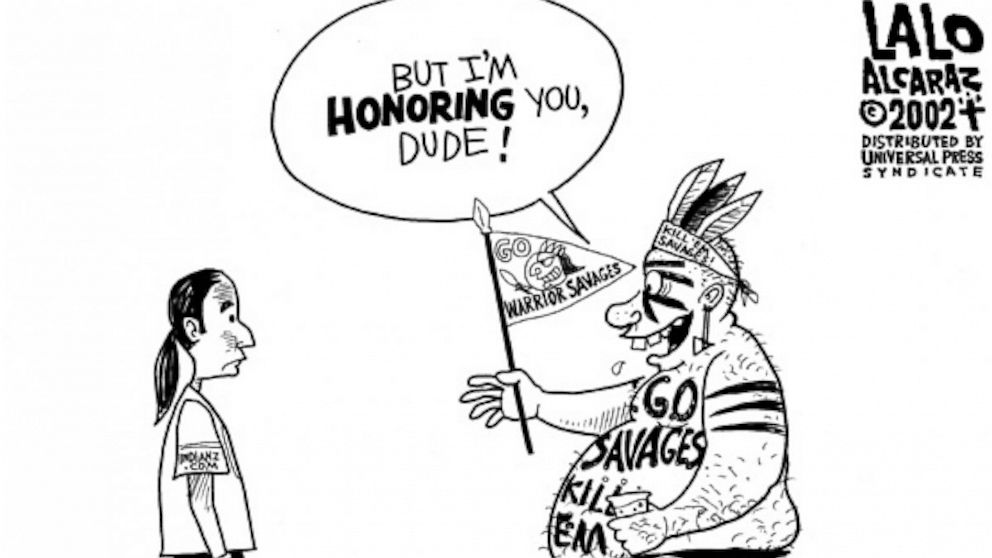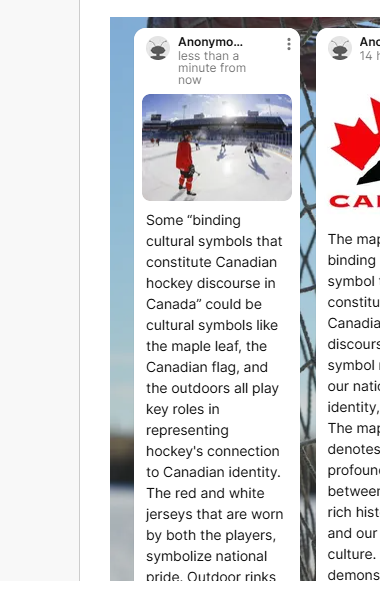4
These are difficult stories. We bear witness in this chapter to the role of sport in furthering the settler colonial projects throughout Turtle Island. Here are some supports to access in the community and from a distance:
First Peoples House of Learning Cultural Support & Counselling
Niijkiwendidaa Anishnaabekwag Services Circle (Counselling & Healing Services for Indigenous Women & their Families) – 1-800-663-2696
Nogojiwanong Friendship Centre (705) 775-0387
Peterborough Community Counselling Resource Centre: (705) 742-4258
Hope for Wellness – Indigenous help line (online chat also available) – 1-855-242-3310
LGBT Youthline: askus@youthline.ca or text (647)694-4275
National Indian Residential School Crisis Line – 1-866-925-4419
Talk4Healing (a culturally-grounded helpline for Indigenous women):1-855-5544-HEAL
Section One: History
A) The Residential School System
Exercise 1: Notebook Prompt
We are asked to honour these stories with open hearts and open minds.
Which part of the chapter stood out to you? What were your feelings as you read it? (50 words)
| I think the first part of the Chapter really stood out to me. What I found interesting about the beginning is how it showed the conflict between the residential school system’s efforts to assimilate Indigenous students and how the students adapted and incorporated many of these forced cultural activities into their own lives. The chapter shows that while the authorities at these schools used things like brass bands, choirs, and sports to try to change students’ cultures (cultural assimilation), these activities were actually connected to Indigenous traditions of music, performance, and recreation. The students’ involvement in these activities, particularly the brass bands and musical performances, not only showed their adaptability but also showed their ability to take control in reclaiming and reshaping these activities in a way that still celebrated their heritage. This perspective on how Indigenous students navigated and resisted the cultural pressures of residential schools reminds us of their resilience and creativity in the face of systemic oppression.
|
B) Keywords
Exercise 2: Notebook Prompt
Briefly define (point form is fine) one of the keywords in the padlet (may be one that you added yourself).
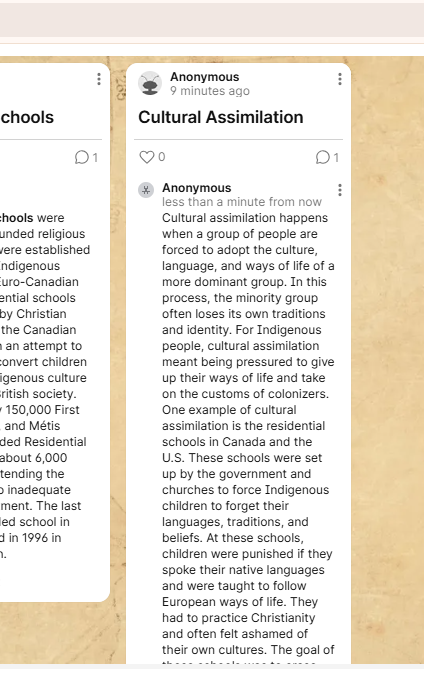
Cultural assimilation happens when a group of people is forced to adopt the culture, language, and ways of life of a more dominant group. In this process, the minority group often loses its own traditions and identity. For Indigenous people, cultural assimilation meant being pressured to give up their ways of life and take on the customs of colonizers. One example of cultural assimilation is the residential schools in Canada and the U.S. These schools were set up by the government and churches to force Indigenous children to forget their languages, traditions, and beliefs. At these schools, children were punished if they spoke their native languages and were taught to follow European ways of life. They had to practice Christianity and often felt ashamed of their own cultures. The goal of these schools was to erase Indigenous cultures and turn children into “good” citizens of the dominant society. This caused harm to generations of Indigenous people by breaking connections to their heritage. The effects of cultural assimilation are still felt today, as many Indigenous communities’ lost languages, traditions, and cultural practices. The effects of these policies continue to affect Indigenous people’s sense of identity and connection to their culture. |
C) Settler Colonialism
Exercise 3: Complete the Activities
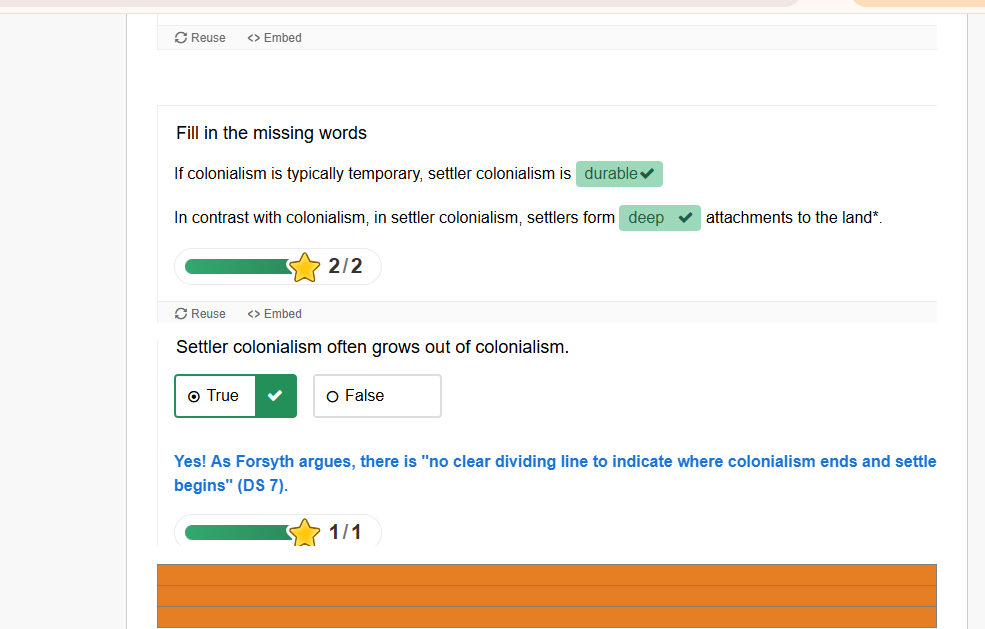
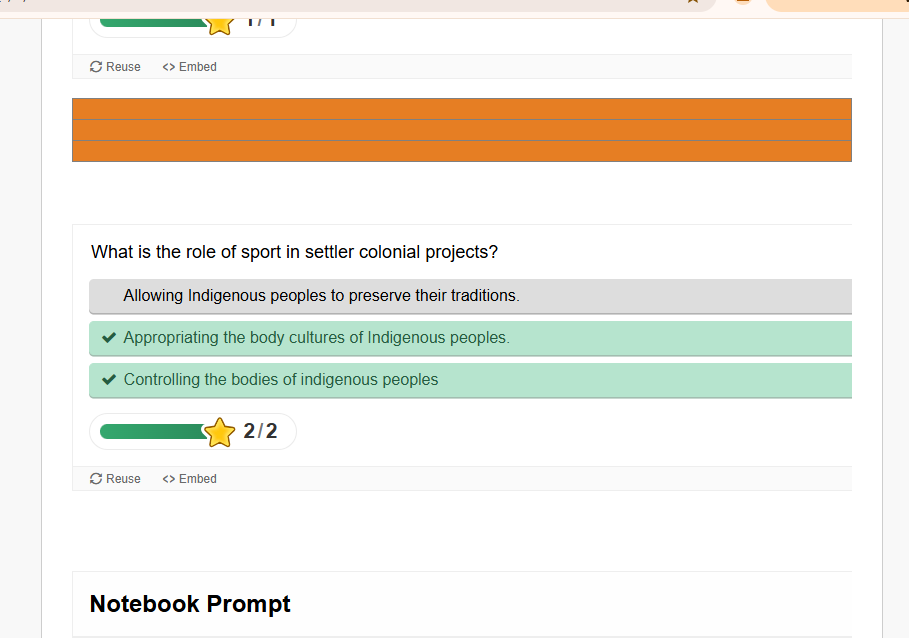
Exercise 4: Notebook Prompt
Although we have discussed in this module how the colonial project sought to suppress Indigenous cultures, it is important to note that it also appropriates and adapts Indigenous cultures and “body movement practices” (75) as part of a larger endeavour to “make settlers Indigenous” (75).
What does this look like? (write 2 or 3 sentences)
| When settlers colonized Indigenous lands, they tried to erase Indigenous cultures, but they also took parts of those cultures and adapted them for their own use. This meant that settlers would sometimes adopt aspects of Indigenous art, clothing, dances, or practices, but often without fully understanding their original meaning or importance.
For example, settlers might use Indigenous designs or symbols in fashion or products for profit, or they might copy Indigenous dances and body movements in entertainment or sports, but without respecting their cultural significance. That saying “Making settlers Indigenous” is referring to how settlers take what they like from Indigenous cultures, using it to feel connected to the land, without acknowledging the history of harm and oppression they caused to Indigenous people. This way, settlers benefit from Indigenous culture while ignoring the deeper issues of colonialism.
|
D) The Colonial Archive
Exercise 5: Complete the Activities
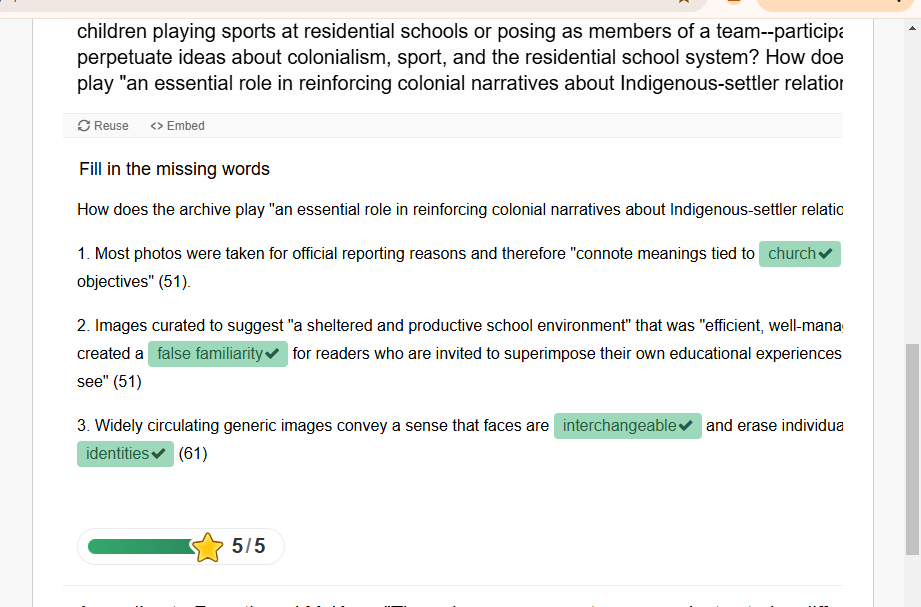
Section Two: Reconciliation
A) Reconciliation?
Exercise 6: Activity and Notebook Prompt
Visit the story called “The Skate” for an in-depth exploration of sport in the residential school system. At the bottom of the page you will see four questions to which you may respond by tweet, facebook message, or email:
How much freedom did you have to play as a child?
What values do we learn from different sports and games?
When residential staff took photos, what impression did they try to create?
Answer one of these questions (drawing on what you have learned in section one of this module or prior reading) and record it in your Notebook.
| What values do we learn from different sports and games?
Different sports and games teach us important values like teamwork, respect, and resilience. What I have learned from this section is that in many Indigenous cultures, traditional games were not just about winning, but about building community and connecting with the land. For example, lacrosse teaches teamwork and respect for opponents, and it had cultural and spiritual meaning. When we decolonize sports, we learn that sports can teach us the importance of cooperation, respect for others, and community over individual success. Indigenous games also helped preserve traditions and bring people together, showing how we can adapt old practices into today’s world. Sports also teach us about fairness, perseverance, and personal growth. By thinking about how to bring Indigenous ways of playing back into sports, we can respect and honor those traditions, instead of letting sports be shaped by colonial ideas. |
B) Redefining Sport
B) Sport as Medicine
Exercise 7: Notebook Prompt
Make note of the many ways sport is considered medicine by the people interviewed in this video.
In the video “Sports is Medicine – The importance of sport for Canada’s Indigenous peoples,” sport is seen as medicine in many ways
|
C) Sport For development
Exercise 7: Notebook Prompt
What does Waneek Horn-Miller mean when she says that the government is “trying but still approaching Indigenous sport development in a very colonial way”?
| When Waneek Horn-Miller says the government is “trying but still approaching Indigenous sport development in a very colonial way,” I think she means that, while the government is making efforts to support Indigenous sports, the efforts still comes from a colonial mindset. This usually means the government is forcing solutions that don’t fully respect or fit with Indigenous cultures and values. Instead of working with Indigenous communities to create sports and activities that reflect their unique traditions, the government uses a more mainstream and western approach. This can lead to misunderstandings or even replacing traditional Indigenous games with Western sports. Horn-Miller believes true support would involve Indigenous people leading the way and making decisions that honor their cultural practices. |
Exercise 8: Padlet Prompt
Add an image or brief comment reflecting some of “binding cultural symbols that constitute Canadian hockey discourse in Canada.” Record your responses in your Notebook as well.
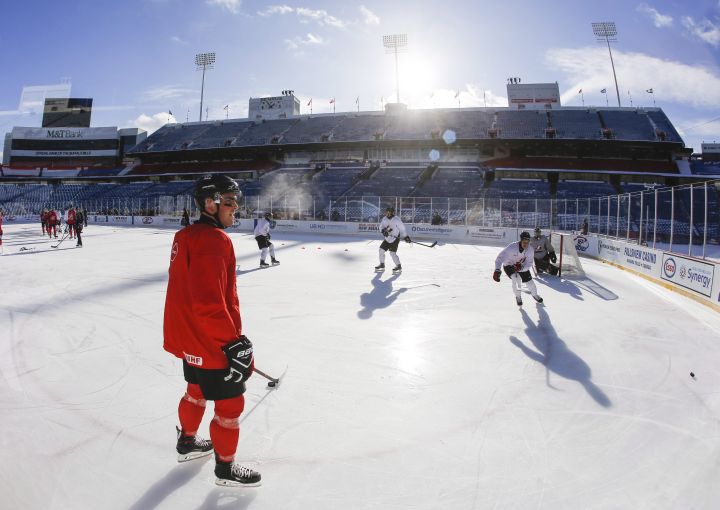
Some “binding cultural symbols that constitute Canadian hockey discourse in Canada” could be cultural symbols like the maple leaf, the Canadian flag, and the outdoors all play key roles in representing hockey’s connection to Canadian identity. The red and white jerseys that are worn by both the players, symbolize national pride. Outdoor rinks are also an important cultural image, reflecting Canada’s long history of playing hockey in nature. The sport itself is often associated with values like community, resilience, and teamwork, which are important elements in the national discourse surrounding hockey. These symbols highlight how hockey is deeply tied to Canadian culture, both as a sport and as a source of collective identity.
|
Section Three: Decolonization
Please see the major assignment for this half of the term in the final section of this chapter.

